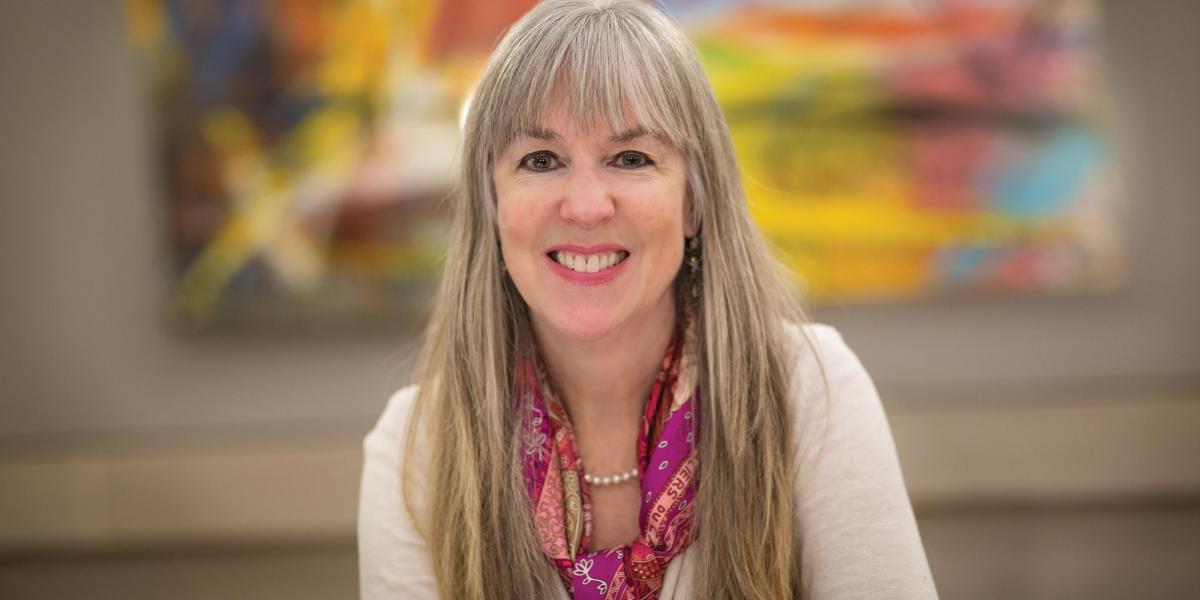The Truth About Vaccines: Their Benefits are Vastly Underestimated
Kate O’Brien is working toward a full accounting of vaccines’ benefits.
They came with measles, tuberculosis, pneumonia, tetanus and other preventable diseases. As a newly trained pediatrician in Haiti in 1991, Kate O’Brien learned the power of vaccines “not just to touch one individual at a time, but to affect the health of a family, of a community, of generations of people.”
The experience shaped her career. O’Brien, MDCM ’88, MPH ’94, is now executive director of the Bloomberg School’s International Vaccine Access Center. She’s also a member of the WHO’s Strategic Advisory Group of Experts (SAGE) on Immunization, which guides global vaccine policies and strategies. In this Q&A, she discusses some of the Center’s current projects, immunization trends and a new way of assessing the full impact of vaccines.
You have a recent paper about estimating the “full public health value” of vaccines. Can you tell us about that?
The usual way of measuring a vaccine’s value is by assessing its efficacy—how much disease happens among children who got the vaccine compared to those who didn’t. That’s an important metric, but it doesn’t fully quantify the value of vaccines.
Vaccines can have massively positive economic consequences. For example, the child who doesn’t get meningitis because she was vaccinated has a much brighter lifelong economic future than one who suffers that terrible infection, as does her family. The siblings of the child who suffers meningitis may leave school because the family has lost income and can no longer afford the fees.
So, full public health valuation includes not only reductions in disease but also how vaccines prevent or reduce school absenteeism, lost income, social and political disruption and especially health inequality.
How does health inequality factor in to a vaccine’s value?
[In] many countries, the poorest children have a much lower likelihood of actually getting vaccinated than children from wealthy communities. Poor families often come from social classes, ethnic groups or other communities that are marginalized. Those groups usually also have the highest risk of disease. They’re living in crowded conditions. They have poor nutrition. Water and sanitation [are] poorly available to them.
For every dose of vaccine that’s given [in the poorest communities], the disease reduction is greater than of the same vaccine program in a wealthy community. So, there’s often greater value in the delivery of vaccines to the least resourced communities.
How could this way of valuing vaccines inform policy?
Gavi, the Vaccine Alliance, helps poor countries to secure vaccines for their children. Every five years, Gavi looks at the portfolio of vaccines it could newly invest in and comparatively values [them]. They are now assessing value by considering many of the broader benefits that we’ve talked about, including equity.
How does IVAC’s work relate to other vaccine-related work being done at the School?
The vaccine value chain starts with basic scientific discoveries that launch vaccine development efforts. That’s largely what the Center for Immunization Research here at Hopkins works on—Phase I and Phase II trials of new vaccines.
Large Phase III trials, in which we quantify whether the vaccine does what it’s intended to do for disease protection, is a focus of the Center for American Indian Health’s work.
If a vaccine is efficacious and succeeds in licensure, IVAC takes up the work from that point.
We help countries and global policymakers answer questions like, do they have substantial disease burden? Where is the disease burden? Which populations are most at risk? How might this vaccine be best used? Which populations most need the vaccine? What are the economic benefits of the vaccine? It’s really about providing evidence that would inform vaccine policies and optimize vaccine implementation by country programs.
What is IVAC working on now?
We’re working with several countries including Nigeria, India and Pakistan to support national and state government efforts on vaccine decision-making, delivery and sustainability. We are also assessing strategies that help parents get their children vaccinated. In Kenya we have been partnering with local researchers to find out whether text messaging or small cash payments succeed in getting children vaccinated more fully and on time. In Nigeria we’re starting a project to use automated cell phone approaches to inform parents when local clinics are open and ready to vaccinate children, hoping to increase vaccine demand.
With partners in India, we’re working on measuring the impact of a new vaccine introduction approach. Usually, vaccines are introduced into states with the strongest vaccination programs, but they usually have the lowest disease burden. With the pneumococcal vaccine, the Indian government has shifted that approach 180 degrees and is beginning vaccination in the states with the highest burden of disease. This is a really smart and data-driven approach—to make sure that those who most need the vaccine have the first chance to get it.
Do you see any trends that might shape the future of IVAC’s work?
There is increasing attention on how to make the most of existing vaccines. The number of vaccine doses needed to protect a child at the onset of a vaccine program, when the burden of disease is at its maximum, may be different than the number of vaccine doses needed 10 years into a program.
We want to be innovating more in the vaccine delivery space and using data to drive decisions on vaccine delivery optimization. Unless programs can measure what they are doing, they are trying to … guess what works.
[And] in the future, I think we’re going to see increased attention on maternal immunization, which offers great opportunities for reducing disease both in pregnant women and the very youngest infants. An adult vaccination focus will also include responses to disease outbreaks like Ebola, yellow fever, dengue and influenza, so we have to know much more about vaccinating adults.
